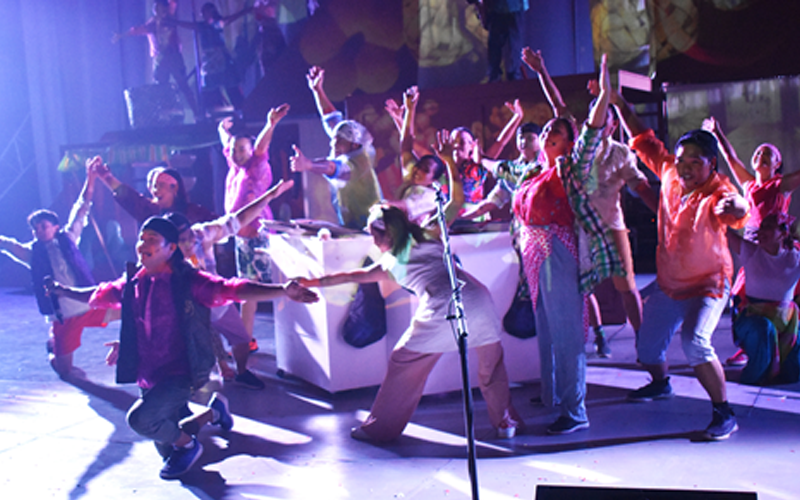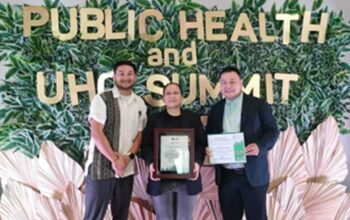
THE Jagna sa Tulo Ka Hugna, a three-act musical play that depicts the life, struggle and culture of Jagnaanons, was finally shown on September 20 at the new air-conditioned Jagna Cultural Center.
Spectators were captivated in the highly anticipated musical play as an opening salvo of the first day of novena for annual fiesta on September 29, in honor of St. Michael the Archangel.
Jagna sa tulo Ka Hugna was produced with the end in view “to foster the growth and development of Jagna’s cultural and artistic landscape.”
It also aimed “to foster creativity preserving cultural heritage nurturing collaboration and aspires to create vibrant and inclusive artistic community that will flourish for years to come.”
Performers include the Jagna Performing Arts Guild, Cantores de Jagna, Jagna String Ensemble, Three Miguelians and the United Jagna Band. The play was also participated in by Carl Vince Laurden, LGU department heads and members of the Sangguniang Bayan led by Vice-Mayor Teofisto Pagar, Jr.
The play was directed by Chris Lyndon B. Millado and light and sound technical theatre director Virgilio SJ “KATSCH” Catoy. Assocate artistic director Marco Luis Viana of the Tanghalang Pilipino and company actress Lhorvie Ann Nuevo trained the performers.
Mayor Joseph Ranola, who is a performing artist himself, expressed gratitude to the TP’s bigwigs and all other persons to make the play a reality. He also thanked all the players for the superb performance.
The play has earned the impression of former DPWH secretary Roger Mercado. This prompted the secretary to invite the group to do the same in his hometown, Maasin, Southern Leyte sometime next month. This he announced at Mayor Ranola’s house after the play.
Earlier in the afternoon, Mayor Ranola led the blessing and inauguration of the completed projects with Mercado as the special guest. Then, the mayor led the guests to the musical show.
Invited visitors who watched the musical play include Candijay Mayor Thamar Olaivar, Duero Mayor Al Taculad, G-Hernandez Mayor Jess Baja, Dauis Mayor Roman Bullen with his wife, Dimiao Mayor Randolph “King” Ang, Batuan Mayor Atty. Antonino Jumawid, Panglao Mayor Edgar Boy Arcay was represented by his wife, Loay Mayor Lahar Ayuban was represented by the Loay municipal treasurer.
Vice-Mayor Teofisto Pagar, Jr. led some Sangguniang Bayan members to watch the play till the end.
Representatives of Congresswoman Alexie B. Tutor, DPWH, Bureau of Fire Protection, Department of Education, contractor Boboy Labunog with his son and other sectors were also on hand to witness the mother of all shows of the year.
Historian Marianito Luspo wrote the script for the play. And here’s the synopsis.
ACT ONE: Kagahapon. The mythic beginning of the town is depicted as a place of natural beauty and bounty, its first inhabitants sustained by the regular surge of the tigui fish at the river’s mouth, a phenomenon so fascinating it gave rise to the expression “Ni-hag na!” – it’s now sizzling! and which in time lent itself to the place-name Hagna. Yet even this corner of paradise had a dangerous side, brought about by southern pirates who used to make slaving forays on the nascent town. Through all these the early inhabitants of Jagna turned to their Patron Señor San Miguel for his unfailing succor, a leitmotif of the struggle between Good and Evil that would be repeated centuries later. In late 1900, when Jagna was burned by American occupation troops, Captain Goyo Caseñas stood up to the invaders. But though he and his men perished through treachery in the trenches of Lonoy, the age-old spirit of persistence and regeneration prevailed, brought about by the wings of trust in the Patron Saint and in both their faith and cultural traditions. Thus did Jagna sizzle on.
ACT TWO: Karon. In present-day Jagna calamay makers toil to bring the basic ingredients of its signature cottage industry – ground sticky rice, coconut milk and brown sugar to a boil. Yet, even as it can be said that Jagna’s calamay practically built this town, its industrious and creative inhabitants developed other pursuits, practical and artistic, as well, thus, contributing to its economic growth and prosperity and creating its distinction as Bohol’s second most progressive town. Towards the end of this Act, the present generation of Jagna-anons sing of their conviction that their present could only be sustained when they carry with them the example and traditions of their forebears. Thus, in the final anthem, the unique local practice of the Sabwag is reenacted: showering with petals the present as a way of blessing its continuing march ahead. Jagna, indeed, is sizzling.
ACT THREE: Ugma. Jagna’s Padagan sa Kometa (Running the Comet Lantern) and Dagit sa Bitoon (Capturing the Star Lanterns) are twin pageants traditionally conducted at the start and at the end of Christmastide. These not only showcase the remarkable skills of the town’s craftsmen, but also essay the Jagnaanon’s commitment to embracing and continuing the cultural traditions they have received from their ancestors. In the different Star Lanterns are symbolized their towns’ present goals and aspirations, in the Comet Lantern, their hope for eventual fulfillment. Only in having unity of intentions could Jagna’s future be dazzlingly bright and spectacular as the proverbial tigui fish coming together at the river’s mouth, making its water sizzle, as in days of yore. (rvo)


